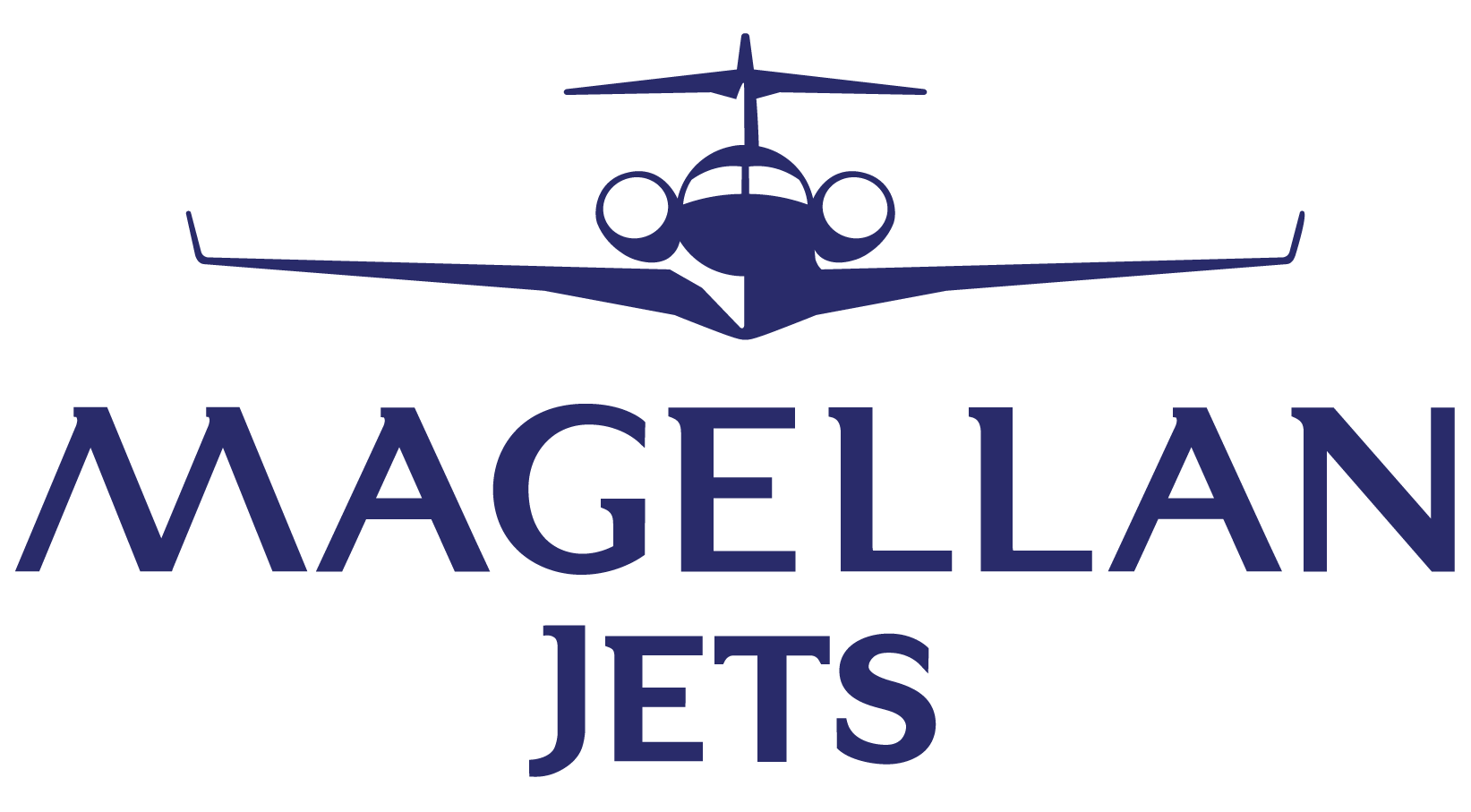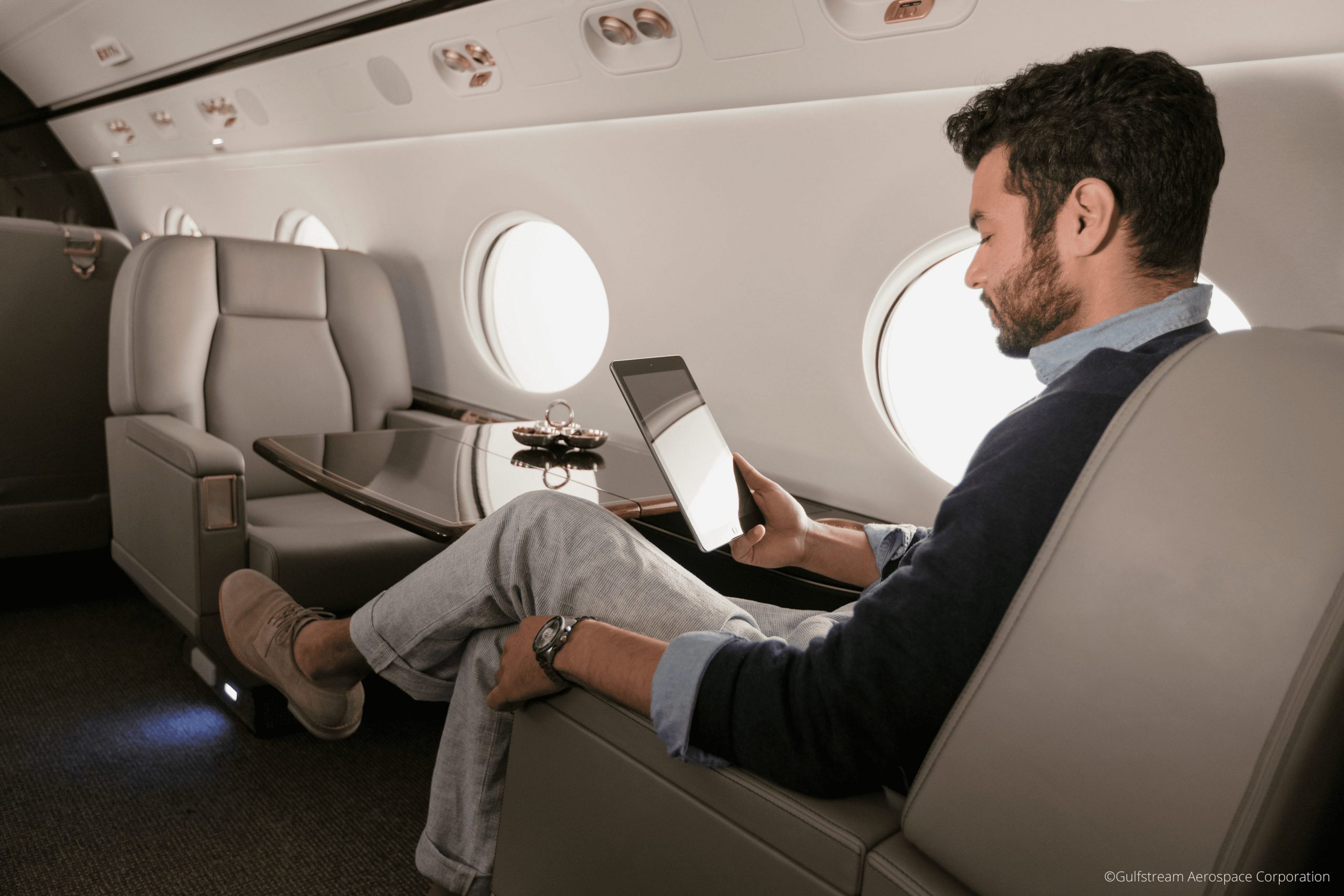Sustainable aviation fuel, or SAF, is one of the most promising and exciting solutions to reducing carbon emissions from flights. As the aviation industry moves to decarbonize all aspects of air travel, SAFs are one of the tools the sector is utilizing to help meet its climate action goals. Private business aviation is poised to become more environmentally friendly through the increased adoption of SAFs, and the private jet sector has the potential to drive enthusiasm for SAFs across the entire aviation industry. But what are SAFs? Here’s everything you need to know about sustainable aviation fuels, including:
- 1. What are Sustainable Aviation Fuels (SAFs)?
- 2. How much can SAFs save in carbon emissions?
- 3. What are SAFs made from?
- 4. Are SAFs safe?
- 5. Can SAFs be used in any aircraft?
- 6. How do SAFs figure into the industry’s sustainability goals?
- 7. Who is using SAFs currently?
- 8. What role does private business aviation have to play?
- 9. What are the other benefits of using SAFs?
- 10. What are the barriers to wider use of SAFs?
- 11. Who are the top producers of SAFs?
WHAT ARE SUSTAINABLE AVIATION FUELS?
Sustainable Aviation Fuels, or SAFs, are a cleaner, greener alternative to the fossil fuel used by most jets. SAFs allow the aviation industry to reduce its carbon footprint, because they come from sustainable, renewable sources.
HOW MUCH CAN SAFS SAVE IN CARBON EMISSIONS?
- SAFs can be up to 80% less carbon-intensive over their life cycle than fossil jet fuels, according to the Air Transportation Action Group. In fact, the International Air Transportation Association says the CO2 absorbed by crops used to make SAFs is roughly equal to the amount produced during jet flights, which would make SAFs roughly carbon neutral; but, carbon emissions from the rest of the process—transportation, processing, refining, and distribution—must be taken into account.
WHAT ARE SUSTAINABLE AVIATION FUELS MADE FROM?
- SAFs are made from a variety of processes using sustainable feedstocks (raw materials used to make fuels). Those include municipal solid waste, like product packaging, food scraps, and newspapers; excess agricultural, forestry, or wood waste; used cooking oil; and energy crops, like fast-growing grasses and algae. There are even emerging methods to produce SAFs without using biological material, instead utilizing renewable electricity or the sun’s energy to break up water and carbon dioxide molecules—but according to Aviation Benefits Beyond Borders, the non-biological alternative is currently “prohibitively expensive and needs further development.”
ARE SUSTAINABLE AVIATION FUELS SAFE?
- Yes. In order to be approved for use, SAFs have to go through strict testing—first in a laboratory, then on the ground, and finally, in the air during actual flight—to be certified for safe use by the American Society for Testing and Materials. Currently, SAF is blended up to 50% with fossil jet fuels to ensure it is safely compatible with existing jet fueling systems. That’s because some of the less environmentally friendly chemicals in fossil jet fuel are included on purpose to prevent fuel leaks in older engines. Since this isn’t a problem with newer engines, Aviation Benefits Beyond Borders says the blend limits will eventually increase as older technology is phased out, until they reach 100% SAF.
CAN SAFS BE USED IN ANY AIRCRAFT?
- Yes. SAFs are a “drop-in fuel,” meaning they can be used, stored, and distributed in the same manner and using the same existing infrastructure as fossil jet fuel. This is because SAFs are nearly chemically identical to fossil jet fuel, and can be blended with it.

HOW DO SAFS FIGURE INTO CURRENT CLIMATE ACTION GOALS?
- Currently, aviation produces about 781 million tons of CO2 per year, about 2% of global manmade carbon emissions. The amount of CO2 emissions from aviation is only expected to grow; The aviation industry is set to double the number of passengers carried by 2050, and according to a U.S. Department of Energy report, global demand for jet fuel is expected to increase from 106 billion gallons in 2019 to 230 billion gallons in 2050. The aviation industry has set a goal of halving their net CO2 emissions by 2050 compared to 2005 levels, so SAFs, which produce up to 80% less CO2 over their lifecycle, offer enormous potential for reaching that goal.
WHO IS CURRENTLY USING SAFS?
- More and more commercial airlines, like Lufthansa, JetBlue, and United Airlines, are making commitments to use SAFs, and some airlines, like Lufthansa, even offer passengers the ability to “buy” SAFs when they book their flights paying for the appropriate amount of the sustainable fuel to offset their trip’s CO2 emissions. In 2016, Norway’s Oslo Airport became the first airport in the world to offer airlines the ability to refuel with SAFs, using Finnish provider Neste’s 50-50 blend of fossil jet fuel and SAF. Aviation Benefits Beyond Borders tracks data on SAF use; to date, over 320,000 commercial flights have used SAFs since 2011, and six airports can currently boast a regular supply of SAFs.
What Role Does Private Business Aviation Have To Play?
WHAT ARE THE OTHER BENEFITS OF USING SAFS?
- In addition to CO2 emission reduction, the use of SAFs can reduce sulfur oxide and nitrogen oxide emissions. According to SkyNRG, SAFs also have a higher energy density than fossil jet fuel, and have an improved fuel efficiency of 1.5-3%, meaning jets using SAFs have more range or higher payload capabilities. And, since the feedstocks used to make SAFs can be grown in more places than fossil fuels can be drilled, SAFs could reduce the cost of fuel for aviation providers—and help them gain market security by having a more diverse supply of fuel sources.
WHAT ARE THE BARRIERS TO WIDER SAF USE?
- Limited availability of SAFs remains the biggest obstacle. NBAA CEO Ed Bolen laid out the next steps for wider SAF adoption in business aviation at a panel discussion in December 2020, saying, “Now that we know sustainable aviation fuel works … How do we make it more available, and how do we increase adoption?” The global supply chain network for sustainable aviation fuels is still growing—but as technological innovations continue in the industry, they are expected to become more and more economically viable. Aviation Benefits Beyond Borders says remaining challenges to wider SAF implementation include locking down a supply of sustainable feedstock for making the fuels, ensuring that SAFs are priced competitively with existing fossil jet fuels, and compelling governments to make policy changes to incentivize the SAF industry to grow in scale.
Who are the top producers of SAFs?
- Some of the major producers of sustainable aviation fuels include Neste in Finland; Gevo, World Energy, and Fulcrum BioEnergy in the United States; SkyNRG in the Netherlands; and Velocys in the United Kingdom—and those are just some of the bigger names in SAF production. The SAF market is growing, and is expected to be worth $15,307 million by 2030.

With Magellan Jets, The Future Of GReen Travel Is here now
New industry commitments and innovations are making sustainable aviation fuels more competitively priced and widely available, but you don’t have to wait to reduce your carbon footprint. If you’re looking for a purely private solution to your air travel needs and are concerned about your impact on the environment, inquire now to discuss offsetting your travel with our private aviation consultants—and read more below about our ability to offer carbon offsets on all charter flights, memberships, and jet cards.















